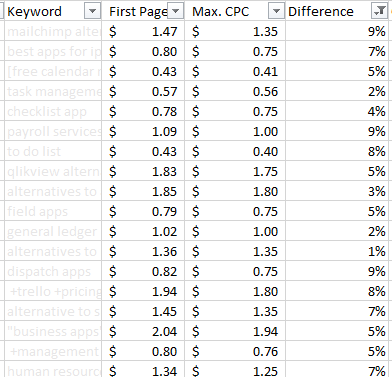Defeating The Dog Days: 5 Tips To Boost SEM Conversion Volume During The Summer Slump
Summer is a slow season in many industries -- which makes it the perfect time to review your PPC accounts and conduct some experiments, according to columnist Susan Waldes.

If you happen to be in the sunglasses, summer camp or air conditioning repair business, congratulations on a great last few weeks for your SEM program. If you are the rest of us and feel like you have to swim upstream to meet your conversion volume goals lately, take comfort that we all are suffering from the “summer slump” right along with you. As temperatures rise, search volumes fall.
The summer means people are out and about. Kids are out of school, workers are on vacation, and everybody spends more time on leisure activities and less in front of screens. This means there is just less searching across almost all verticals.
Search demand will remain slow for most industries until the second week of August, when most verticals will start seeing an uptick. Though we can’t change this seasonal phenomenon, there are some proactive optimizations that will give your low conversion numbers a boost and help you make the most out of the summer slump.
Here are five tips to juice a bit more out of your SEM program while everybody else melts in the heat.
1. Try Enhanced CPC
In your campaign settings, test turning on “Enhanced CPC.” This will allow Google to increase your bid up to 30% more than your actual bid when the algorithm determines a user has a strong probability of converting. It might not be a setting that you use year-round, but when impression volume is at its lowest, enhanced CPC can mean snatching important incremental conversions from your competition.
2. Review Your Negative Keywords
Some negative keywords are “forever.” If you don’t sell blue widgets and never will, then “blue” should remain a negative in your widget shop account.
However, in a mature account, other negative keywords are added for performance reasons due to seasonal inventory, or sometimes by mistake. A period of undesirable performance on a certain keyword phrase may have been years ago, for a couple months, and with a different offer or landing page from the one you currently use.
Periodically, negatives should be vetted, and there is no better time than when you need a volume boost. Aside from removing any negatives that no longer apply, negatives that have been added purely for performance during a limited period of time should be pulled off and retested.
(Tip: Use shared campaign negative lists where possible to group negative keywords, with a “name” for the list that indicates why they are there and if they should be removed or reviewed at some point. )
3. Try More Broad Matching
Tight match types are often the hallmark of a mature and well-managed PPC account, but all too often there is so much focus on exact, phrase and modified broad match that regular broad match gets cut all together.
Broad match is not something to be afraid of. Granted, the queries are more diverse and less “sure” in terms of consistent conversion rates, so bid lower. However, if you don’t have any broad match (or have very little), you are missing out on significant conversion volumes.
Adding more broad match keywords can give an instant boost to your conversion volume and, secondarily, help new keyword discovery and account growth via matching to queries that you hadn’t thought of before.
4. Filter For Below First Page
On your keyword tab, choose the “Status” filter, and uncheck everything except “Below First Page Bid” under “Eligible: limited.”
You’ll see a list of keywords that are below the first page bid estimate. To get even better data, select a long date range and add another filter for keywords that have had significant conversion volume during that long time period.
Formulaic manual or automated bidding systems will lower a bid sometimes after only a short period of poor performance. If a bid gets lowered below the first page, it may never get enough impressions to garner the satisfactory performance data which pushes the bid back up again. In effect, you can “kill” good keywords over time via bidding automation when they fall off the first page.
Sometimes, bumping the bid by a couple of cents will get these keywords showing again without having any particular impact on cost per action (CPA). Download your filtered list and create a column that calculates the bid increase needed to get to the first page, and test bumping bids up in tiers.
5. Experiment With Your Bidding
Want to know what would happen if you doubled your bid on your top keywords without destroying your overall CPA metrics? You can.
Set an experiment at the campaign settings level. Depending on how conservative you want to be, you can only allow as little as 10% of your impressions on the target keywords to participate.
Choose a set of test keywords (or even just one very important keyword) — perhaps those that had higher conversion volume in the past, or keywords that never got much activity but you think should work well. Set a high CPC multiplier on the “experimental bid” sub-tab in AdWords Editor on your chosen keywords.
As data accrues, you can segment for “experiment” in the Adwords UI and see how the higher bid impacts position, CTR, conversion rate and CPA on the small portion of traffic you are testing. With only 10% of traffic in a certain campaign participating, even if CPA gets uncomfortably high on this bit of traffic, you won’t destroy your overall metrics.
On the other hand, you might find that the higher positions lead to higher conversion rates and significantly more profit. If the experiment wins, you can bid higher on 100% of the traffic moving forward and increase your total conversions significantly on an ongoing basis.
Final Thoughts
Don’t sit around passively waiting for the summer slump to end to start growing your conversion volumes. Take a proactive stance and start testing with these tips. You’ll likely find some techniques to boost your conversion volumes when search is seasonally slow. At the very least, you’ll have some great data that shows higher-ups that you’ve tried everything, and the summer slump is unequivocally “a thing.”
Contributing authors are invited to create content for Search Engine Land and are chosen for their expertise and contribution to the search community. Our contributors work under the oversight of the editorial staff and contributions are checked for quality and relevance to our readers. The opinions they express are their own.
Related stories
New on Search Engine Land




